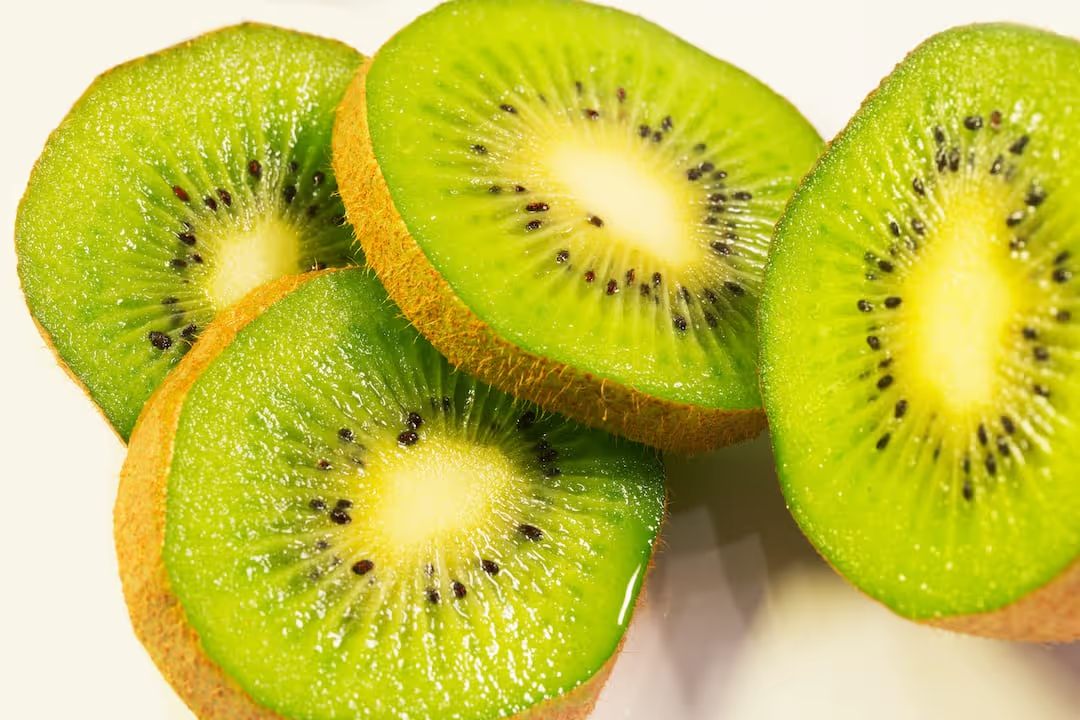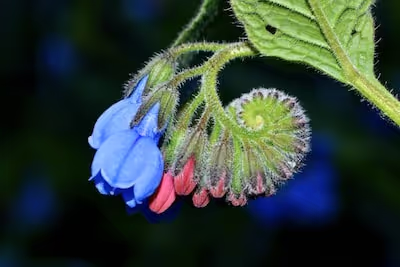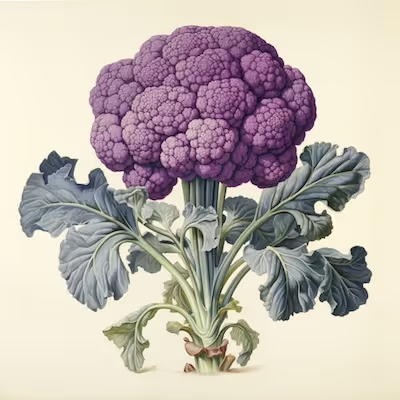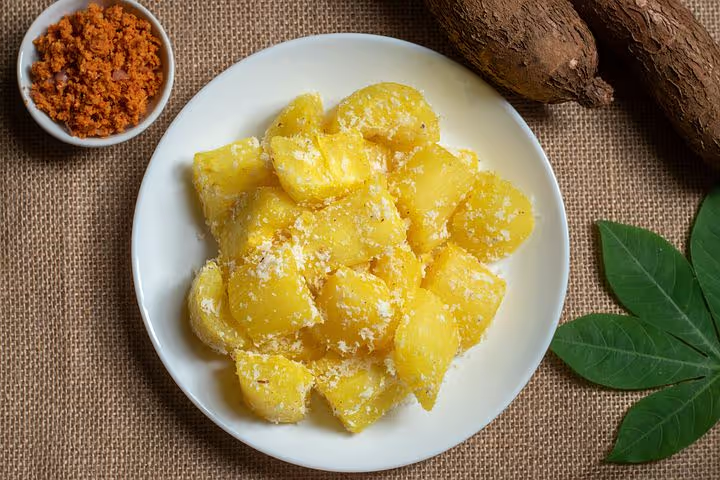Growing Kiwi: How to Grow and Harvest Your Own Kiwi Fruit

Growing Kiwi
Growing kiwi at home demands a trellis, steady sun, and well-draining soil. Luckily, select hardy varieties can withstand brisk winters, extending growing kiwi opportunities beyond mild climates. If you've got patience—kiwis may take several years to fruit—you're rewarded generously: vigorous vines, shady arbors, and sweet-tart harvests to savor.
Cheatsheet: Grow & Harvest Kiwis at Home
🌱 Choose Kiwi Varieties
Hardy kiwi (Actinidia arguta) tolerates -25°F (-32°C). Fuzzy kiwi (Actinidia deliciosa) needs mild winters. Both need male & female vines for fruit. One male pollinates up to 8 females.
🌞 Location & Soil
Full sun, shelter from wind. Well-drained, slightly acidic soil (pH 5.5–6.5). Avoid clay or soggy spots.
🪴 Planting Steps
- Space plants 10–15 ft (3–4.5 m) apart.
- Plant in late spring after last frost, rootball just below surface.
- Mulch heavily; keep soil moist but not wet.
- Support with sturdy trellis, pergola, or wires—mature vines weigh 100+ lbs (45+ kg).
🌿 Training & Pruning
- Train main stem vertically, tie side shoots horizontally.
- Prune in winter: remove dead/dense wood, shorten fruiting canes to 8 buds.
- Summer prune for airflow and sun.
💧 Water & Feed
Water weekly, deep soak. Fertilize in spring with balanced slow-release fertilizer. Avoid high-nitrogen—promotes leaves over fruit.
🐝 Pollination
Kiwis need bees! Male pollen must reach female flowers. For containers consider hand-pollination—brush from male to female blooms.
🍃 Pests & Disease
- Control: Watch for spider mites, root rot, leaf spot.
- Promote good airflow; avoid wetting leaves.
- Use organic sprays only if necessary.
⏳ Harvesting
Fruit ripens 3–5 years after planting. Pick in fall when seeds turn black—fruit softens off the vine. Store at room temp for 1–2 weeks to ripen.
🔪 Tools and Products You'll Need
- Trellis or strong support
- Pruning shears
- Garden gloves
- Mulch
- Organic fertilizer
- Watering can or hose
🥝 Nutrition & Self-Sufficiency
Kiwis: high in vitamin C, fiber, antioxidants, potassium. One mature vine yields enough for a family all winter.
📝 Quick Stats
- Yield: Up to 100 lbs (45 kg)/vine/year
- Harvest window: Oct–Nov (Northern Hemisphere)
- Fruit shelf life: Up to 6 months refrigerated
-
Growing Kiwi: climate, site, and the plants that behave
I grow Growing Kiwi in two lanes: fuzzy kiwifruit (Actinidia deliciosa/A. chinensis) for that classic supermarket punch, and hardy kiwi (A. arguta/A. kolomikta) for cold-winter gardens. Fuzzy types thrive in USDA 7 to 9, hardy kiwi push into 4 to 8, and kolomikta can shrug off zone 3 cold if spring frosts don’t torch new shoots.
These vines are dioecious, which means separate male and female plants, so plan on 1 male for 6 to 8 females for good pollination. If space is tight, self-fertile options like ‘Jenny’ (A. deliciosa) and ‘Issai’ (A. arguta) carry their own pollen, although I still see heavier sets with a dedicated male nearby.
Pick a sunny, wind-sheltered spot with fertile, well-drained soil and pH 5.5 to 6.5. Kiwi roots hate wet feet, so I mound beds 8 inches high and mix in compost to keep oxygen in the root zone.
Young growth fries in spring cold snaps at 30 to 31 F or about minus 1 C. I sleep easier with frost cloth staged and irrigation ready because wet soil buffers temperature a hair.
Varieties I trust
- ‘Hayward’ (A. deliciosa): big green classic, late harvest, steady and forgiving once trained. Pollinizer: ‘Tomuri’ in most regions.
- ‘Sungold’/‘Zespri Gold’ types (A. chinensis): sweeter, yellow flesh, earlier ripening, tighter cold window. Needs a matching male like ‘Meteor’ or region-specific mate.
- ‘Ananasnaya’/‘Anna’ (A. arguta): hardy, grape-sized smooth skins, candy-sweet off the vine. Pollinizer: a male arguta.
- ‘Ken’s Red’ (A. arguta): burgundy flesh, tastes like berry jam when you nail ripeness. Vigorous and needs firm pruning.
- ‘Issai’ (A. arguta): self-fertile, early, compact habits for smaller trellises. Fruit sizing improves with thinning.
Trellis, spacing, and planting that saves you grief later
Give each vine a lane: 12 to 16 feet or 3.5 to 5 meters between trunks, and use a serious support. I favor a T-bar trellis with the crossarm at 6.5 feet or 2 meters and two parallel fruiting wires.
Plant slightly high so the crown sits an inch above grade and mulch 3 inches or 7 to 8 cm to cool soil and foil weeds. Keep mulch 2 inches away from the trunk to avoid collar rot.
Train a single trunk to the top wire in year one, then two permanent cordons left and right. From those cordons, renew fruiting canes every winter like grapes.
Pruning calendar that makes vines behave
- Late winter: remove last year’s fruited canes and select new pencil-thick canes spaced 6 to 8 inches or 15 to 20 cm apart along the cordon.
- Early summer: tip vigorous shoots at 6 to 8 leaves beyond the last fruit to push sugars into sizing. Strip watersprouts in the shade zone to open airflow.
- Mid summer: thin clusters to 1 fruit every 4 to 6 inches or 10 to 15 cm on a cane, which prevents marble-to-pea sized runts.
Kiwi bleed sap if cut hard right after budbreak, so I keep structural pruning to deep winter. Summer nips keep sanity and sun on fruit.
Water and feeding without turning vines into monsters
These vines drink steadily but hate soggy soil. I give 1 to 1.5 inches or 25 to 38 mm of water weekly during bloom and sizing, then ease back near harvest to tighten flavor.
High nitrogen turns vines into a jungle and delays fruiting. I feed lightly in early spring with a balanced organic fertilizer, then top up potassium before bloom because K rides flavor and firmness.
Leaf yellowing between veins hints at high pH or iron lockout. A quick soil test and a chelated iron drench usually snaps foliage back.
Pollination, bloom timing, and frost tricks
Kiwi flowers open late spring with a fragrant, creamy bloom that bees love. Male vines release powdery pollen that must reach the sticky stigmas of female flowers the same week.
I hang a single bee house near the trellis and cut irrigation the day male flowers open to keep pollen fluffy. If a late cold front threatens, I throw frost cloth over the top wire like a tent and run micro-sprinklers before dawn.
Harvest maturity, thinning, and storage
Harvest kiwifruit firm, not soft, when seeds are jet black and sugars hit a baseline. A pocket refractometer pays for itself fast.
“For ‘Hayward’, harvest at 6.2 to 7.0 degrees Brix and 15 to 17 percent dry matter, then ripen to 14+ Brix for eating quality.” — UC Davis Postharvest Technology Center
Hardy kiwi run earlier and swing sweet quickly, so I sample fruit weekly once nights cool. Fruit picked at physiological maturity ripens beautifully off the vine in a paper bag with an apple.
Store unripe kiwifruit at 32 F or 0 C with high humidity and they hold for months. On the counter at 68 to 72 F or 20 to 22 C, fruit ripens in a few days and softens from the stem end first.
Yields, patience, and why the trellis matters
With good training, one mature vine can crank 50 to 100 pounds or 23 to 45 kilograms of fruit. The same vine on a flimsy trellis will punish you by year three.
“Global kiwifruit production has exceeded 4 million tonnes in recent years.” — FAO
That scale tells you two things: the crop is forgiving, and postharvest timing makes or breaks flavor. Home growers can beat store fruit by picking at maturity and ripening slow.
Pests and diseases I watch like a hawk
- Bacterial canker (Pseudomonas syringae pv. actinidiae, Psa): prune in dry weather, sanitize tools with 10 percent bleach, and avoid big cuts near rain events. Copper programs exist, and keeping vigor in check helps wounds seal fast.
- Phytophthora root rot: fix drainage, mound beds, and skip overwatering. Once roots brown and collapse, recovery rarely sticks.
- Leafrollers, scale, and mites: winter horticultural oil smothers overwintering stages. I release predatory mites if hot spells spike spider mite counts.
- Sunburn and heat scorch above 95 F or 35 C: a 20 to 30 percent shade cloth over the crossarm saves fruit finish in heat waves.
Troubleshooting quick hits
- Massive vine, zero fruit: you likely have two females or a male-female bloom mismatch. Add the right male or switch to a self-fertile cultivar.
- Flowers drop: late frost or dry wind during bloom. Shelter, water the day before bloom, and add a windbreak.
- Small, seedy fruit: thin earlier and feed less nitrogen. Maintain 1 fruit per 4 to 6 inches or 10 to 15 cm on each fruiting cane.
- Soft storage fruit going mealy: harvest too ripe or stored warm. Pick at maturity indices and chill promptly.
Growing Kiwi on a patio or small lot
Hardy kiwi can run in a 15 to 25 gallon or 57 to 95 liter container with a stout post and crosspiece. I up-pot yearly, root prune lightly in winter, and never let containers dry hard in summer.
Fruit load will be modest but sweet enough to justify the square footage. Self-fertile ‘Issai’ simplifies life in tight spaces.
My field notes on timing by region
- Cool-summer coastal: choose ‘Hayward’ or hardy kiwi for reliable sugars. Golden types may stall on flavor without heat units.
- Hot inland: give afternoon shade to foliage and lean on ‘Sungold’ types for earlier ripening. Mulch deep and irrigate steadily.
- Short-season cold-winter: run A. arguta or A. kolomikta, prune for light, and pick promptly as nights drop in late summer.
Gear and supplies that genuinely help
- Trellis kit or lumber for a T-bar with two 12-gauge wires and strong end posts.
- Bypass pruners and a folding saw for clean winter cuts, plus a cheap pocket refractometer for Brix checks.
- Drip line with 1 gph or 4 lph emitters, two per vine, and a timer to smooth watering.
- Frost cloth rated to 28 F or minus 2 C and a handful of spring clamps.
- Soil test kit or lab test, and a pH meter if your water runs alkaline.
Commercial-grade practices worth borrowing
Adopt cane renewal so each fruiting cane is one year old and anchored neatly to the wire. Keep canopy density at about 30 to 40 percent shade on fruit for good color and fewer rots.
Bag a few sample fruit weekly and track Brix and dry matter with notes. That rhythm turns guesswork into repeatable flavor.
Numbers and references I trust in the field
- UC Davis Postharvest Technology Center: maturity indices, Brix and dry matter targets, and cold storage ranges.
- University extension bulletins from UC ANR, Oregon State, and NCSU: pruning diagrams and disease management basics.
- Royal Horticultural Society: home-scale trellis styles, spacing, and UK-specific cultivar advice.
- Food and Agriculture Organization: production statistics and market context for cultivar choices.
Little techniques that punch above their weight
- Pinch flower buds off the first year to build trunk and cordons that won’t snap in wind.
- Twist-tie fruiting canes under the wire, not over, to lift clusters into light and keep stems from kinking.
- Lay reflective mulch or pale gravel under hardy kiwi if you garden in shade to bounce light under the canopy.
- Ripen fruit in a cooler at 41 to 50 F or 5 to 10 C for a week, then bring to room temp for a flavor pop that tastes like you cheated.
How I decide what to plant where
On the coast I stick with green ‘Hayward’ and drive quality with pruning and Brix checks. Inland I plant at least one golden to be first to the table and add hardy kiwi for snacking in late summer.
If I can’t fit a male, I pick self-fertile and accept a slightly smaller crop. Better fruit you can actually harvest than a botanical soap opera in need of a matchmaker.
FAQ speed round
- How long to first crop: 2 to 3 years for hardy kiwi, 3 to 4 for fuzzy types if trained well.
- Can I graft: yes, and orchardists often topwork females to better cultivars once trunks are set.
- Do I need chill hours: yes, moderate winter chill improves bloom sync and set, which is why warm-tropic sites struggle.
- Why does fruit taste bland: picked too early or vines overwatered late season. Hit the Brix baseline and hold water steady.
Anecdotes from a sticky summer
My best crop came the season I thinned ruthlessly and stopped chasing vine length like a trophy. I tasted fruit off three canes each week, logged Brix, and learned the vines were telling me exactly what they wanted.
Prune with a plan, water like a metronome, and pick by numbers, then by nose. The reward tastes like lime, strawberry, and a little mischief, and it hangs on a trellis you built yourself.
Frequently Asked Questions about Growing Kiwi Plants
What is the ideal climate for kiwi plants?
Kiwi plants thrive in a mild, temperate climate with cool winters and moderately warm summers. Ideal temperature ranges hover between 40°F–80°F (4°C–27°C). Some varieties endure colder climates, tolerating temperatures down to 10°F (-12°C), provided they receive adequate frost protection.
How long does it take for kiwi plants to bear fruit?
Typically, kiwi vines begin fruit production within 3 to 5 years of planting. Fruit yield reaches full potential around the 7-year mark, with proper care and maintenance.
Do I need multiple kiwi plants to produce fruit?
Most kiwi varieties are dioecious, meaning male and female plants grow separately. To ensure pollination and fruit production, plant at least one male plant for every six to eight female plants. Some cultivars are self-fertile and do not require multiple plants.
What type of soil works best for kiwi vines?
Kiwi plants flourish in well-draining, fertile soil enriched with organic matter. Ideal soil pH resides between 5.5 and 7.0. Improve soil drainage and fertility by incorporating compost or aged manure prior to planting.
How often should kiwi plants be watered?
Regular watering keeps kiwi vines healthy. Aim to provide approximately 1 inch (2.5 cm) of water per week, increasing during dry, hot periods. Maintain moist—but not waterlogged—soil conditions to promote steady growth and fruit quality.
How and when should kiwi vines be pruned?
Prune kiwi vines annually during dormancy, typically in late winter. Trim away damaged, dead, or overly vigorous growth, and selectively thin shoots to encourage sunlight penetration and airflow. Regular pruning promotes healthy fruiting and manageable vine growth.
Can kiwi plants be grown in containers?
Smaller kiwi varieties adapt well to container cultivation. Choose a roomy container, minimum 20-gallon (75-liter) capacity, and ensure adequate drainage holes. Container-grown kiwi requires regular watering and feeding, along with seasonal pruning to control vine size.
Growing Kiwi rewards patience and a bit of grit. These vines demand support, consistent watering, and well-drained soil, but the payoff—sun-warmed fruit plucked straight from your own arbor—is worth every ounce of effort. Remember, kiwi plants need both male and female vines for fruit, and a few years to settle in before they start producing. Prune with intention, feed the soil, and keep an eye out for frosty nights. If you’re hungry for more unique fruit, check out growing loquat or Burmese grape for your next backyard experiment. With some patience and a dash of stubbornness, growing kiwi turns a patch of earth into something extraordinary—and that first bite will remind you why you bothered.
Health Benefits of Homegrown Kiwi Harvests
Vitamin C Powerhouse
A single kiwi fruit provides approximately 80% daily vitamin C requirement, boosting immune defense and aiding collagen production.
Digestive Support Boost
Kiwi contains the enzyme actinidin, proven effective in protein digestion and nutrient absorption enhancement.
Heart Health Ally
- Potassium-rich: one kiwi fruit offers roughly 215mg potassium, helping regulate blood pressure levels.
- Fiber-dense: promotes heart health by reducing cholesterol absorption.
- Antioxidants abundant: reduces oxidative stress correlating to lower heart disease risk.
Sleep Quality Improvement
Kiwi provides serotonin and antioxidants shown by research to notably improve sleep quality and duration when consumed regularly before bedtime.
Blood Sugar Management
The kiwi fruit’s low glycemic index (GI around 50) supports steady blood sugar levels, suitable for managing energy stability and diabetes.
Bone Strengthening Benefits
Significant source of vitamin K, kiwi promotes bone health by enhancing calcium absorption and retention—one fruit fulfills around 25% daily needs.
Sustainable Self-Sufficiency
Cultivating kiwi vines at home ensures freshness and nutrient retention, enhancing household nutritional independence and sustainably reducing food miles.
Find out which plants will thrive in your garden!
Answer a few fun questions and get custom plant recommendations perfect for your space. Let’s grow something amazing together!

start your season





